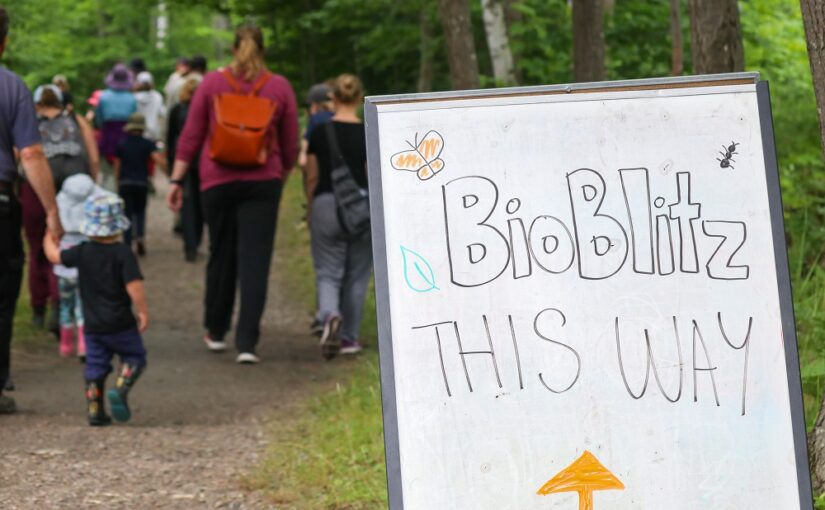Today’s blog was written by Discovery Program Project Coordinator Jessica Stillman.
This summer, Grundy Lake Provincial Park, Killbear Provincial Park, and The Massasauga Provincial Park collaborated with the Georgian Bay Mnidoo Gamii Biosphere (GBB) to host bioblitzes within the world’s largest freshwater archipelago.
What is a bioblitz? In short, it is a community science event for recording different species within a certain location and time.
For these events, park visitors, Friends members, and staff from both Ontario Parks and GBB came together to inventory living things by uploading them to iNaturalist.
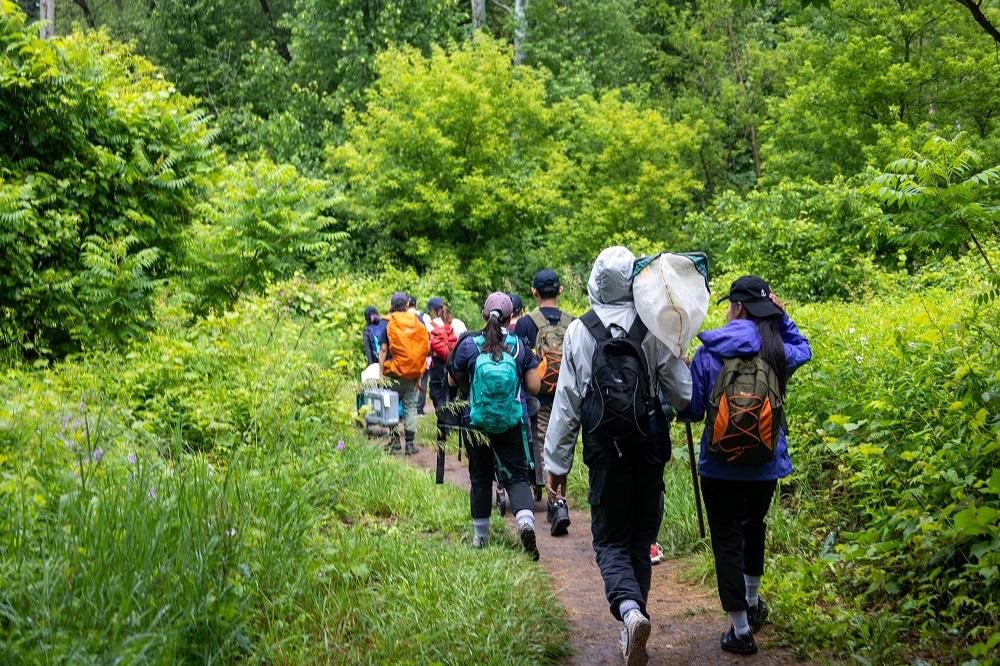
By doing so, they created a snapshot of the living things on a certain day in a certain place that scientists can use to better understand things like biodiversity, species range, population, or seasonal variation.
The three participating parks are relatively close to one another geographically when you think about how big Ontario is.
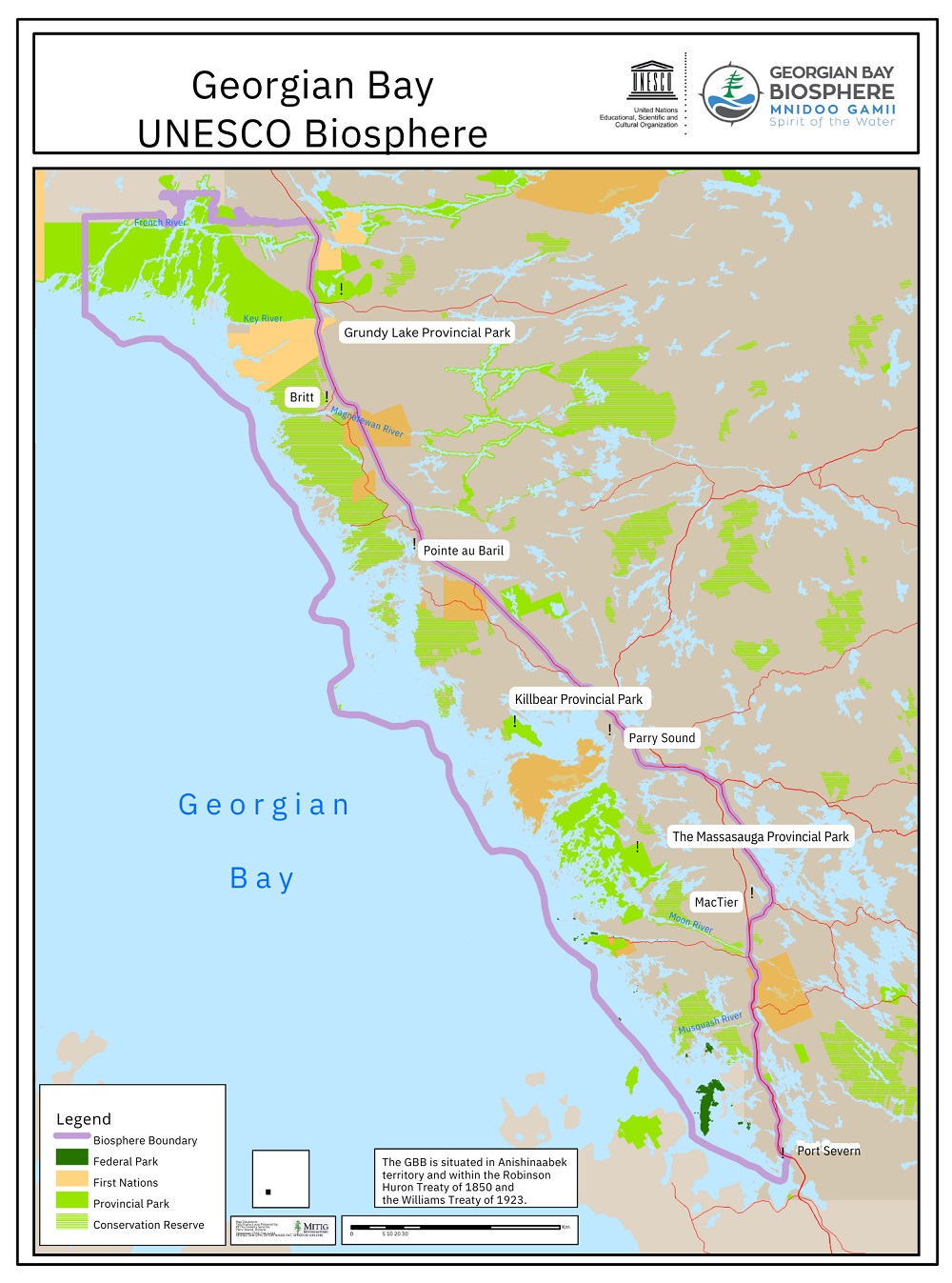
They also all fall within the Georgian Bay Mnidoo Gamii Biosphere, so you might suspect that each bioblitz would yield similar observations. And while some commonalities were seen, the difference in locations surveyed together with the time of summer did result in some interesting finds.
We connected with park staff from each event to hear how their bioblitz events went:
Grundy Lake Provincial Park
July 21, 2023
The coolest sighting of the day was a basking Blanding’s Turtle.
Distinguished by its highly domed shell and bright yellow chin, it’s a favourite among Grundy Lake visitors who are familiar with the park’s turtle monitoring program.
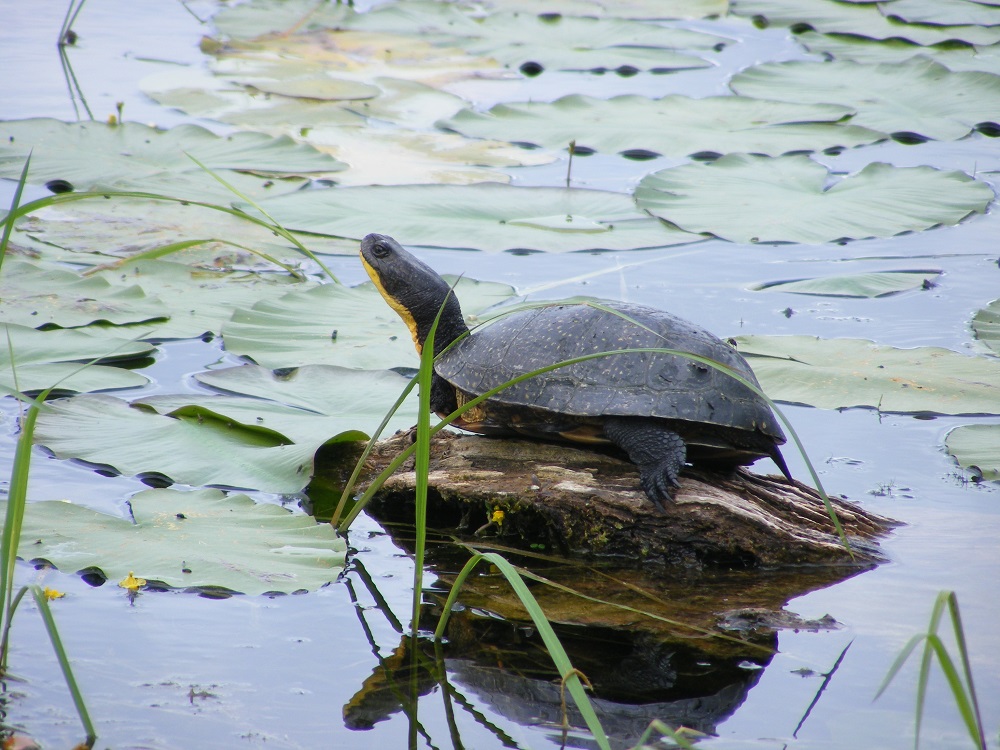
This turtle was kind enough to stay on the same log for a good 2-3 hours! Staff were able to set up a spotting scope for visitors to view it throughout the bioblitz.
Over 160 people participated in the morning bird walk along the Gurd Lake Dam Trail and dropped by the bioblitz table located at Smokey Point.
Not all participants submitted observations, but everyone chatted with park and GBB staff or tried out some of the equipment provided for observing nature.
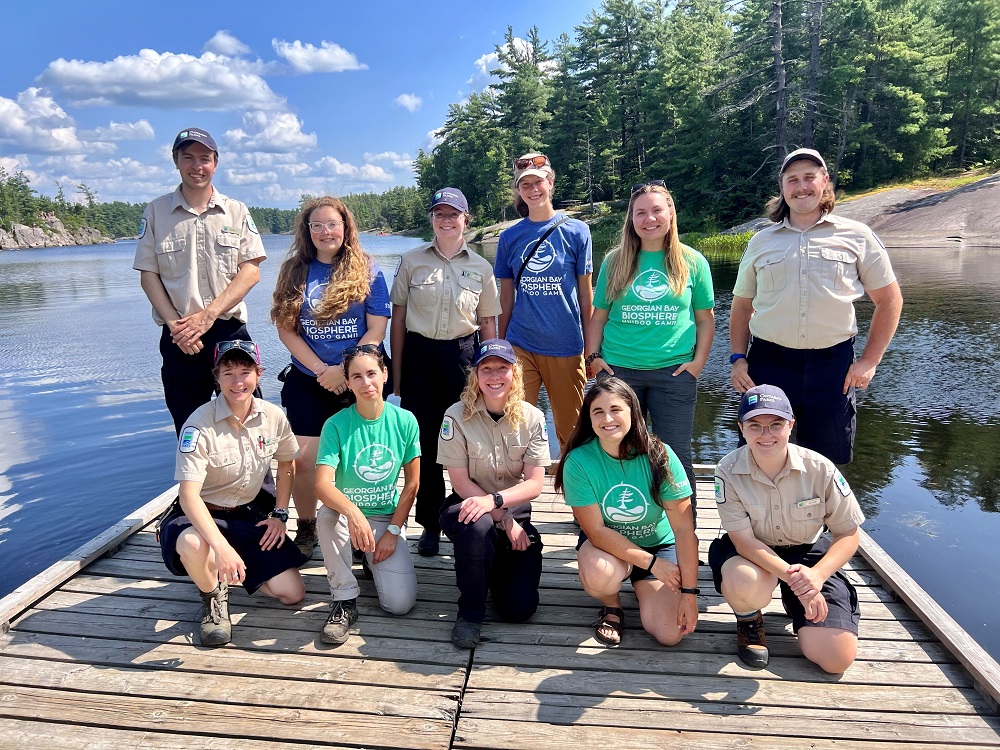
While the addition of 134 observations of 80 different species was a measure of success for the event, the greatest achievement was the connections people were seen making with one another and nature.
Killbear Provincial Park
August 3, 2023
The Bioblitz was filled with smiles, laughs, and lots of learning.
Everyone involved was a teacher and a learner. One participant explained to staff that this was “a great event to trick her kids into learning while having fun!”
It was the perfect way to get more people exploring what lived at Killbear while sparking their curiosity about what they can find once they’re home.
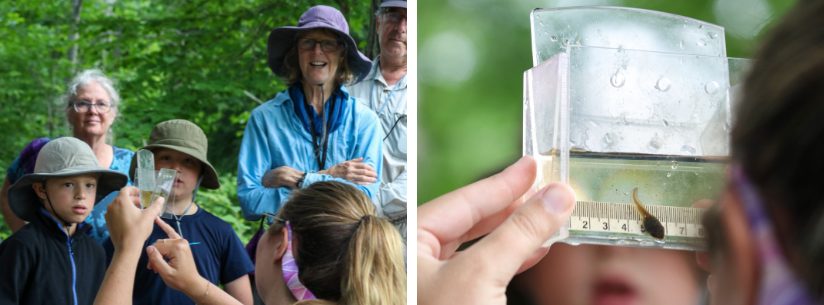
In the interest of species diversity, the Killbear event was split into three groups surveying three very different habitat types.
One group did sweep netting in a meadow near the park’s front office, another group dip netted in the wetland near the Blind Bay campground, and the final group hiked the mixed hardwood forest along the Lookout Point Trail in search of flora and fauna.
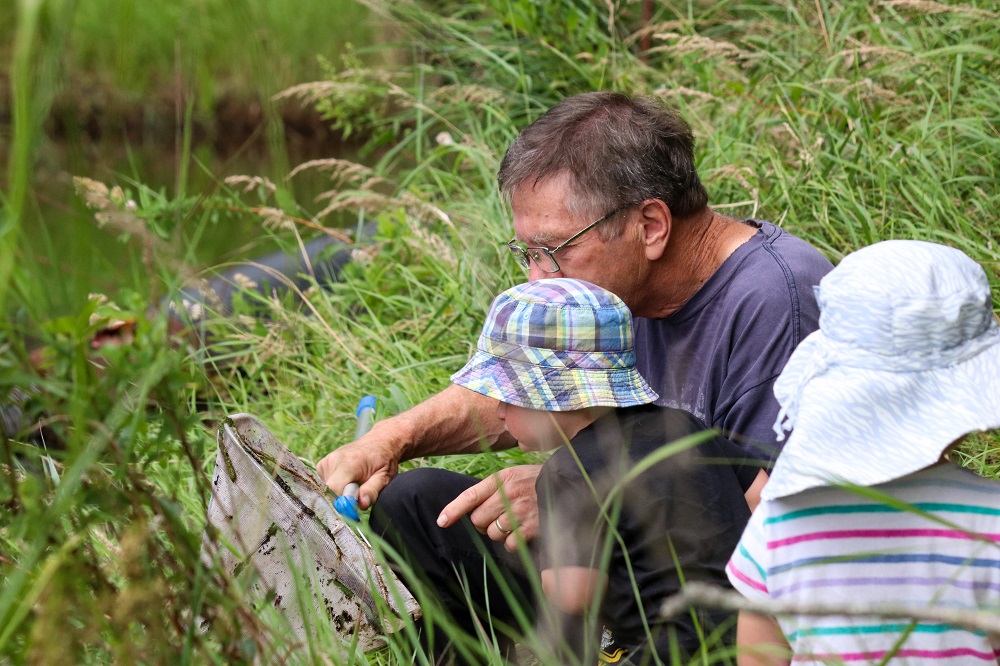
This tactic was highly successful with the group uploading a total of 211 observations, which included 142 different species to iNaturalist.
A few of the species found included:
- Eastern Red-backed Salamanders
- a Yellow Warbler
- a Ruby-throated Hummingbird
- a few Giant Water Bugs
- a Monarch Butterfly
- Grey Treefrogs
- Brook Stickleback
And a fan favourite among the younger crowd…. dozens of Green Frogs!
Fifty participants made up this community of scientists, but countless more continue to contribute to iNaturalist everyday at Killbear.
The Massasauga Provincial Park
August 26, 2023

Thrilled doesn’t even begin to describe how the Friends of The Massassuaga feel about the park’s bioblitz on the Calhoun Lodge property and adjacent hiking trails.
29 participants brought their wealth of knowledge and observed a whopping 511 observations with 201 different species.
Best sighting of the day — a healthy beech tree! Once a common sighting in the area, beech trees, especially healthy ones, are a rare sight these days due to over a decade of struggle against beech bark disease. You can only imagine everyone’s excitement to find one without any signs of it.
It goes to show that things we once took for granted as common might not be around forever.
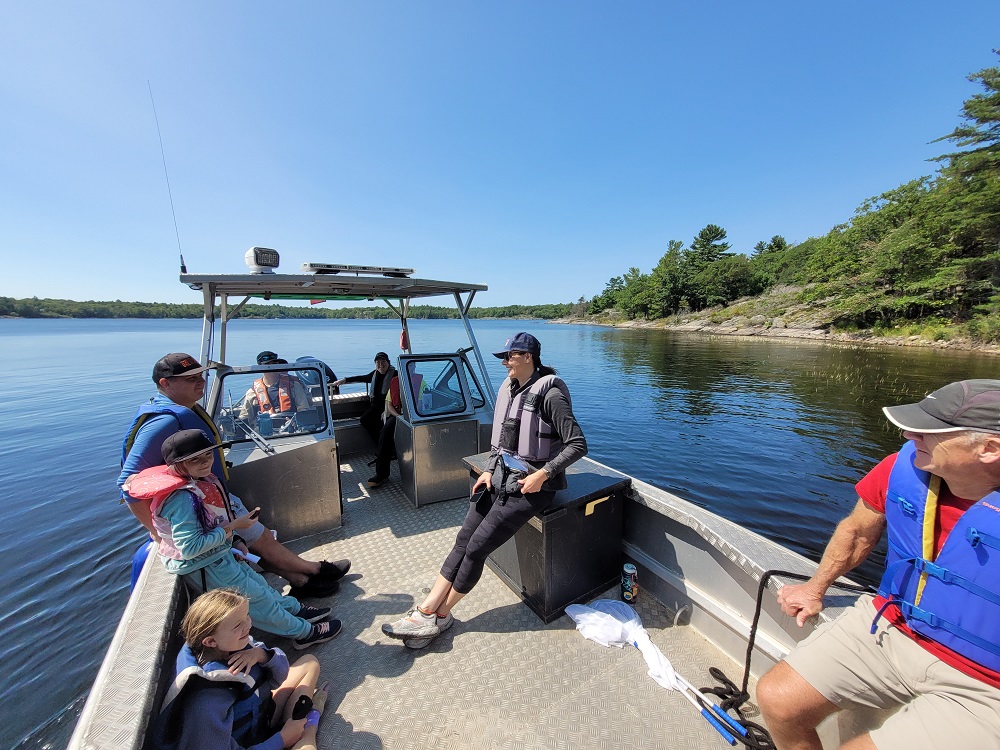
Finding that healthy beech tree and submitting it to iNaturalist will help researchers better understand how this species is doing under the continued pressures of beech bark disease.
It sure gave the group some hope for this species future in the park.
Continue with community science!
Just because these events are over, doesn’t mean the science contribution ends.
Get outside and observe nature and share your sightings with park staff and scientists!
During the events community scientists were uploading their observations to iNaturalist, and you can too! Every observation contributes to biodiversity science, from the rarest reptile to the most common backyard weed.
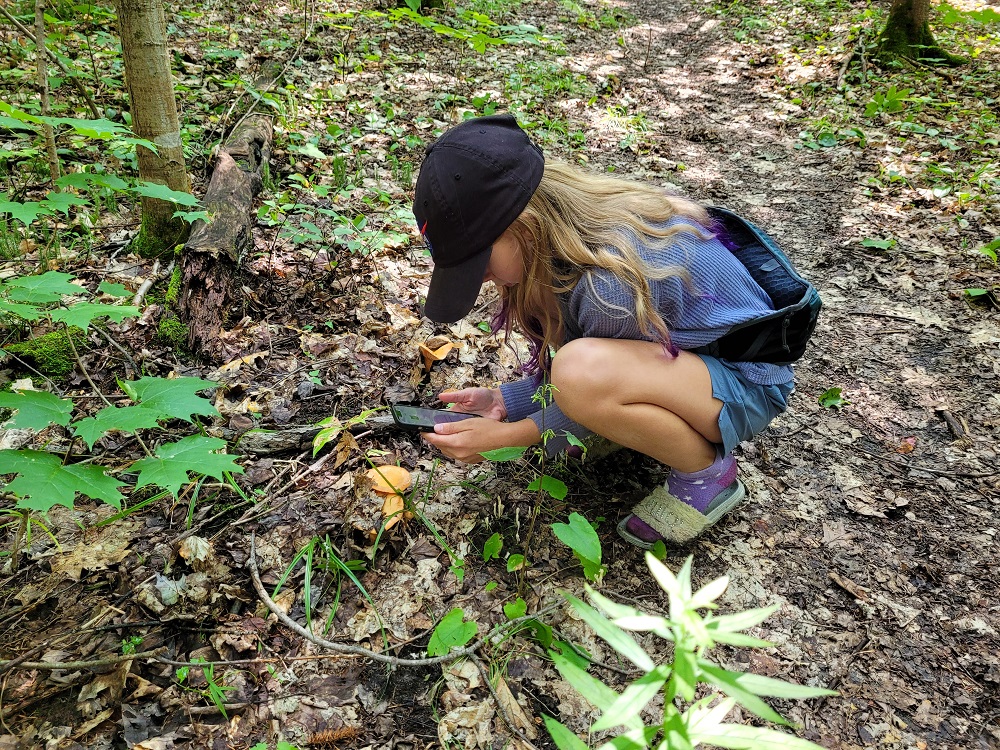
Each provincial park has their own iNaturalist project that you are contributing to automatically when you upload a sighting within a park. This shows us your observations of rare, at risk, or common species!
No observation is too small, so get out there and contribute to community science!
Thanks to The Georgian Bay Mnidoo Gamii Biosphere for collaborating with a parks this summer to host bioblitzes. These were incredible opportunities for visitors and staff to connect with local experts and nature.
The Georgian Bay Biosphere (GBB) is a non-profit registered Canadian charity. They are a community-based organization that works with partners in their region to protect the environment, create vibrant communities, and support a healthy economy by building capacity through education and culture.
